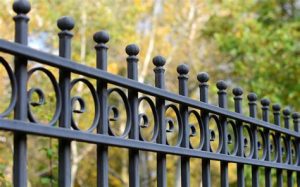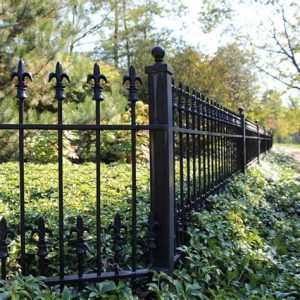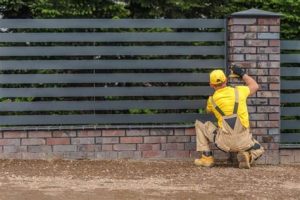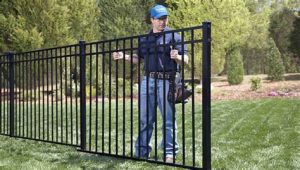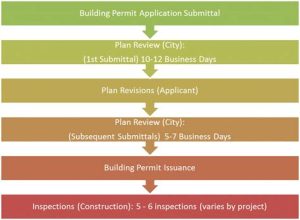Learn how to install a fence with expert tips: choose materials, prepare the area, set posts, install rails, and ensure stability.Installing a split rail fence can be a great DIY project that enhances your property’s charm and provides a functional barrier for pets and children. Not only does it add rustic appeal, but it also allows for easy customization to fit your yard’s layout. In this guide, we’ll walk you through the essential steps for installing a split rail fence on your own, starting with choosing the right materials and preparing the designated area. We’ll cover how to effectively set the corner and end posts, install the rails, and secure the fence for lasting stability. Whether you’re a seasoned DIY enthusiast or a first-time homeowner, our tips will help ensure that your fence is not only beautiful but also built to last! Let’s dive in and get started!
Choosing the right materials
When it comes to installing a split rail fence, choosing the right materials is crucial for both aesthetics and durability. The materials you select will directly impact the overall look, longevity, and functionality of your fence. In this section, we will explore the most common materials used for split rail fencing, helping you make an informed decision for your DIY project.
The two primary materials for split rail fences are wood and vinyl. Wooden split rail fences are traditional, providing a rustic charm to your property. Generally, cedar and pine are the preferred choices due to their natural resistance to decay and insects. On the other hand, vinyl options are becoming increasingly popular for their low maintenance and durability. Unlike wood, vinyl won’t rot, splinter, or warp, making it a long-lasting alternative.
It’s also important to consider the gauge of the materials you choose. For wooden fences, opt for thicker rails and posts to ensure sturdiness. For vinyl, choose high-quality products that can withstand harsh weather conditions. Additionally, don’t forget to look into any local regulations regarding fencing materials, as some areas may have specific requirements that you must adhere to.
Preparing the designated area
Before you begin your DIY project of installing a split rail fence, it’s crucial to properly prepare the designated area. This step is vital for ensuring a smooth installation and a stable fence that will last for years. Below are a few steps to guide you through this preparation process.
First, you need to measure your area accurately. Use a measuring tape to determine the length of the fence and mark the corners with stakes or flags. This will help you visualize the layout and avoid any unnecessary adjustments later on. Make sure to double-check the measurements to ensure accuracy.
Next, clear the area of any obstacles such as rocks, plants, or debris. You want a clean slate for your fence installation. If you encounter any large roots or bushes, you’ll need to remove them to prevent complications during installation. It’s also advisable to check local building codes and property lines to avoid legal issues later.
Lastly, consider the slope of the land. If your chosen location is on a slope, you may need to adjust your installation method to accommodate the changing height. This can involve cutting some of the posts to ensure that the fence remains level. Taking the time to prepare the area properly will save you a lot of headaches down the line!
Setting the corner and end posts
When it comes to installing a split rail fence, one of the most critical steps is setting the corner and end posts. These posts are the backbone of your fence, as they provide the necessary support and stability. Properly installing these posts will ensure that your fence stands strong against harsh weather conditions and any potential wear and tear.
First, you need to measure and mark the locations for your corner and end posts. Use a measuring tape to determine the distance between the posts, leaving ample space between them for the rails. Once the spots are marked, you will want to dig holes that are at least 2 feet deep. This depth helps to provide a robust foundation for your posts. Make sure the holes are wide enough to accommodate the posts and allow for the necessary adjustments.
Next, place the corner and end posts into the holes, ensuring they are level and plumb. You can use a level tool for accuracy and adjust the positioning as needed. After confirming they are straight, fill the holes with concrete or compacted soil to secure them in place. Remember to allow the concrete to cure for at least 24 hours before installing the rails, ensuring your fence will remain stable for years to come.
Installing the rails
Once you have set up the corner and end posts for your split rail fence, it’s time to move on to installing the rails. The rails are the horizontal pieces that will connect your posts together, providing both stability and structure to your fence.
Typically, split rail fences use two or three rails per section.
- Measure the distance between the posts: Using a measuring tape, ensure that the distance between adjacent posts is consistent. This will help in cutting the rails to the correct length.
- Cut the rails: If necessary, cut the rails to fit between the posts. Most split rail fences are designed to have the rails sit in a notch at the ends of the posts. Ensure your cuts are clean for a snug fit.
- Insert the rails: Starting from the bottom, place the rail into the notches of the posts. If your design uses two rails per section, make sure the second rail sits at a consistent height above the first.
- Secure the rails: Use appropriate hardware, like screws or brackets, to secure the rails in place. Ensure that they are tightly fastened to provide the necessary stability for your fence.
It’s important to periodically step back and check for level and alignment as you proceed. A well-aligned fence not only looks professional but also stands the test of time.
Securing the fence for stability
Once you have installed the split rail fence, ensuring its stability is crucial for both its longevity and functionality. This involves a few important steps to fortify the structure against the elements and any potential physical stress.
First, it’s essential to check the alignment of the fence by using a level. Uneven posts can lead to weak points in the fence that may cause it to lean or collapse over time. Make adjustments as necessary before moving forward.
Next, consider using gravel or concrete to anchor the posts firmly in place. If you opted for gravel, ensure that it’s packed tightly around the post. For concrete, pour it into the post hole and allow it to cure for several days before adding any railings or further construction.
Additionally, if the fence is taller than a certain height, or if you live in an area prone to high winds, you might want to install stabilizing braces. These support the vertical posts and prevent them from swaying, providing an extra layer of protection against the elements.
Finally, periodically inspect the fence for any signs of instability or shifting. Early detection allows for timely repairs, ensuring that your split rail fence remains a beautiful and functional part of your property for years to come.
Frequently Asked Questions
What materials do I need to install a split rail fence?
You will need split rails, fence posts, a post hole digger, a level, a string line, and possibly gravel for drainage.
How deep should I dig holes for the fence posts?
Typically, the holes for the fence posts should be one-third of the height of the posts to ensure stability.
What is the best way to mark the location of fence posts?
Using a string line to outline the desired fence line is the best way to ensure your posts are evenly spaced and aligned.
How far apart should the fence posts be placed?
Fence posts are usually placed about 8 to 10 feet apart, depending on the height and type of fence you are installing.
Should I use concrete to secure the posts?
While not necessary for all installations, using concrete can provide additional stability for the posts, especially in sandy or loose soil.
How do I install the split rails once the posts are set?
Simply slide each split rail into the holes of the installed posts, ensuring they are level and securely fit into place.
What maintenance is required for a split rail fence?
Regular checks for stability, treating any wood with weather-resistant sealant, and removing any weeds or debris around the fence are key maintenance steps.
